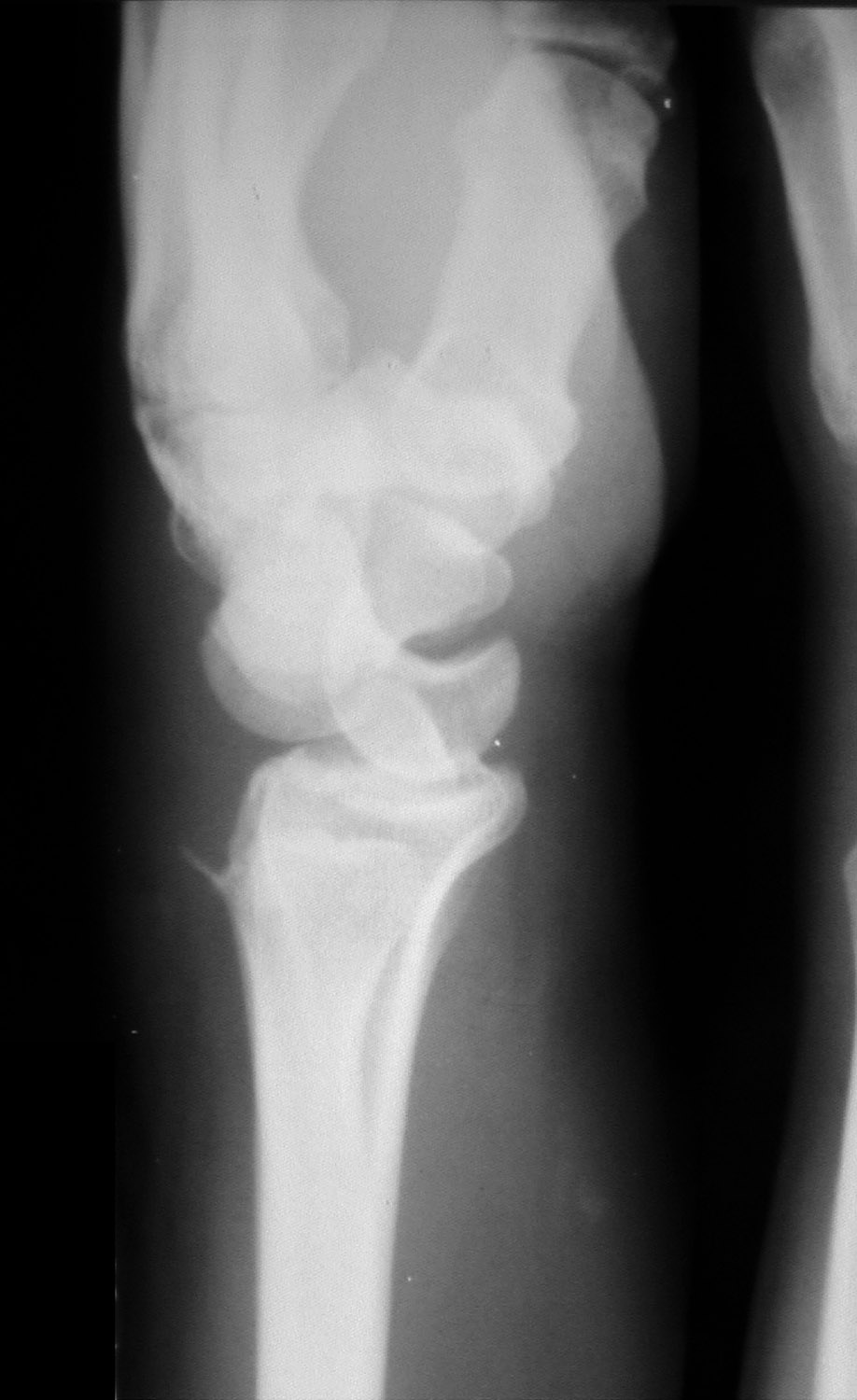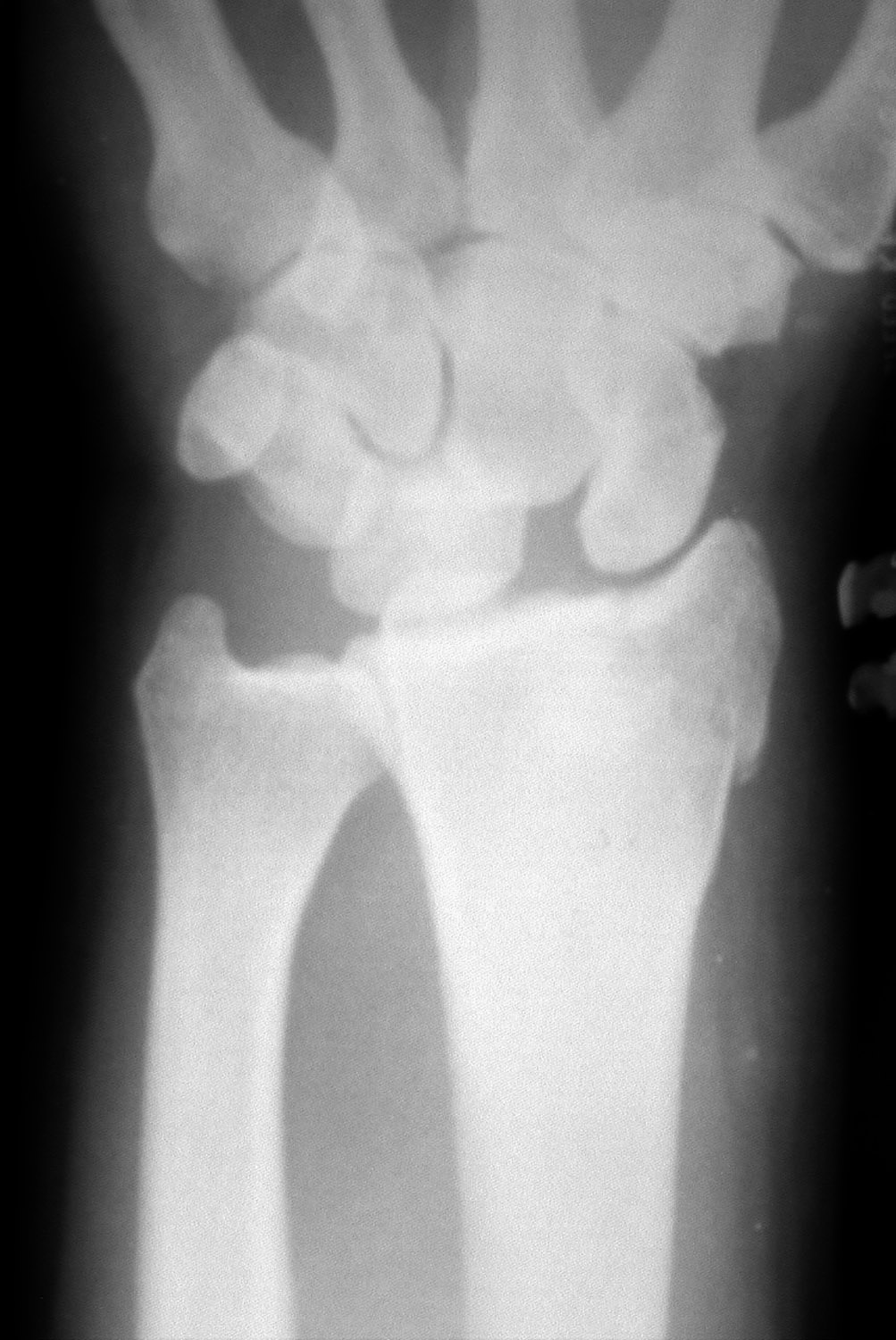
Lateral radiograph of a Barton fracture. Note the volar displacement of the scaphoid associated with an intra-articular distal radial fracture.
 Posteroanterior radiograph of a Barton fracture. Note the intra-articular fracture of the radius with the widening of the space between the scaphoid and lunate structures.
Posteroanterior radiograph of a Barton fracture. Note the intra-articular fracture of the radius with the widening of the space between the scaphoid and lunate structures.--- fracture and dislocation of the radio carpal joint .
John Rhea Barton characterized the Barton fracture in 1838.2 This fracture involves a dorsal rim injury of the distal portion of the radius. The volar Barton fracture is thought to occur with the same mechanism as the Smith fracture, with more force and loading on the wrist. The dorsal Barton fracture is caused by a fall on an extended and pronated wrist, increasing carpal compression force on the dorsal rim. The salient feature is a subluxation of the wrist in this die-punch injury.
The Barton fracture involves either the palmar or dorsal radial rim, and the mechanism is intra-articular. By definition, this fracture has some degree of carpal displacement, which distinguishes it from a Colles or Smith fracture. The palmar variety is more common than the dorsal type .
PA and lateral views of the wrist involve a minimal examination, but a true lateral projection is needed to evaluate the degree of carpal subluxation. In 1992, Wood and Berquist suggested that trispiral tomograms or coronal and/or sagittal CT scans could be used to evaluate articular congruity of the distal radius.
Barton fractures are classified as dorsal or palmar (always intra-articular), and they always involve carpal subluxation.
Complications of Barton fractures are similar to those of Colles fractures.
No comments:
Post a Comment